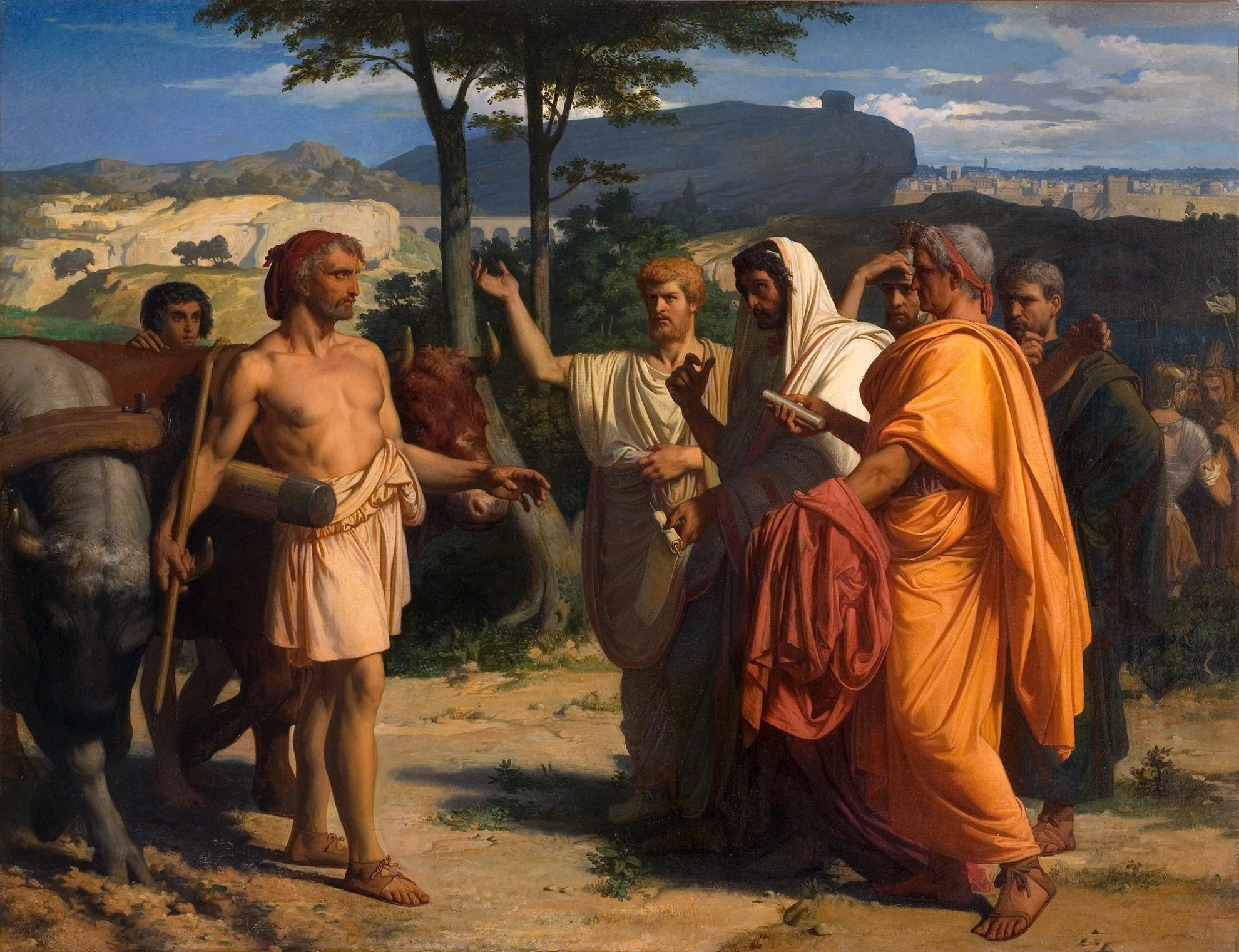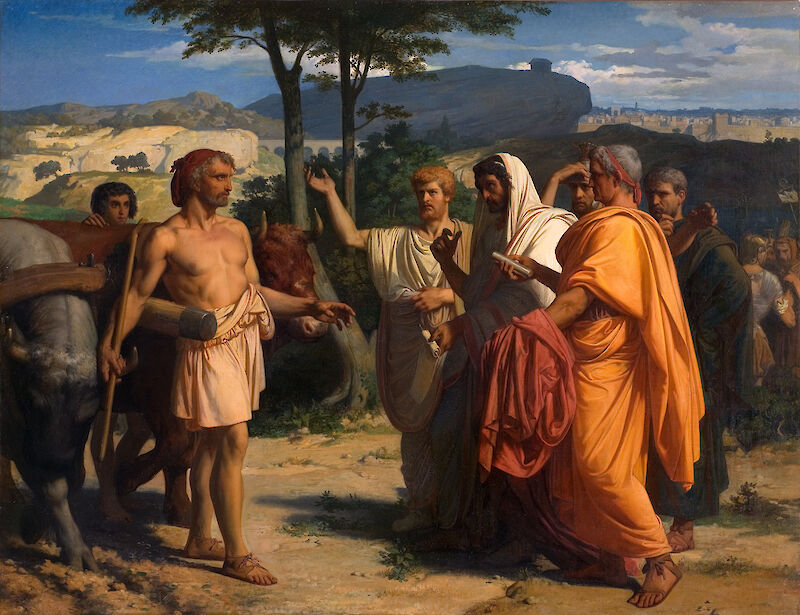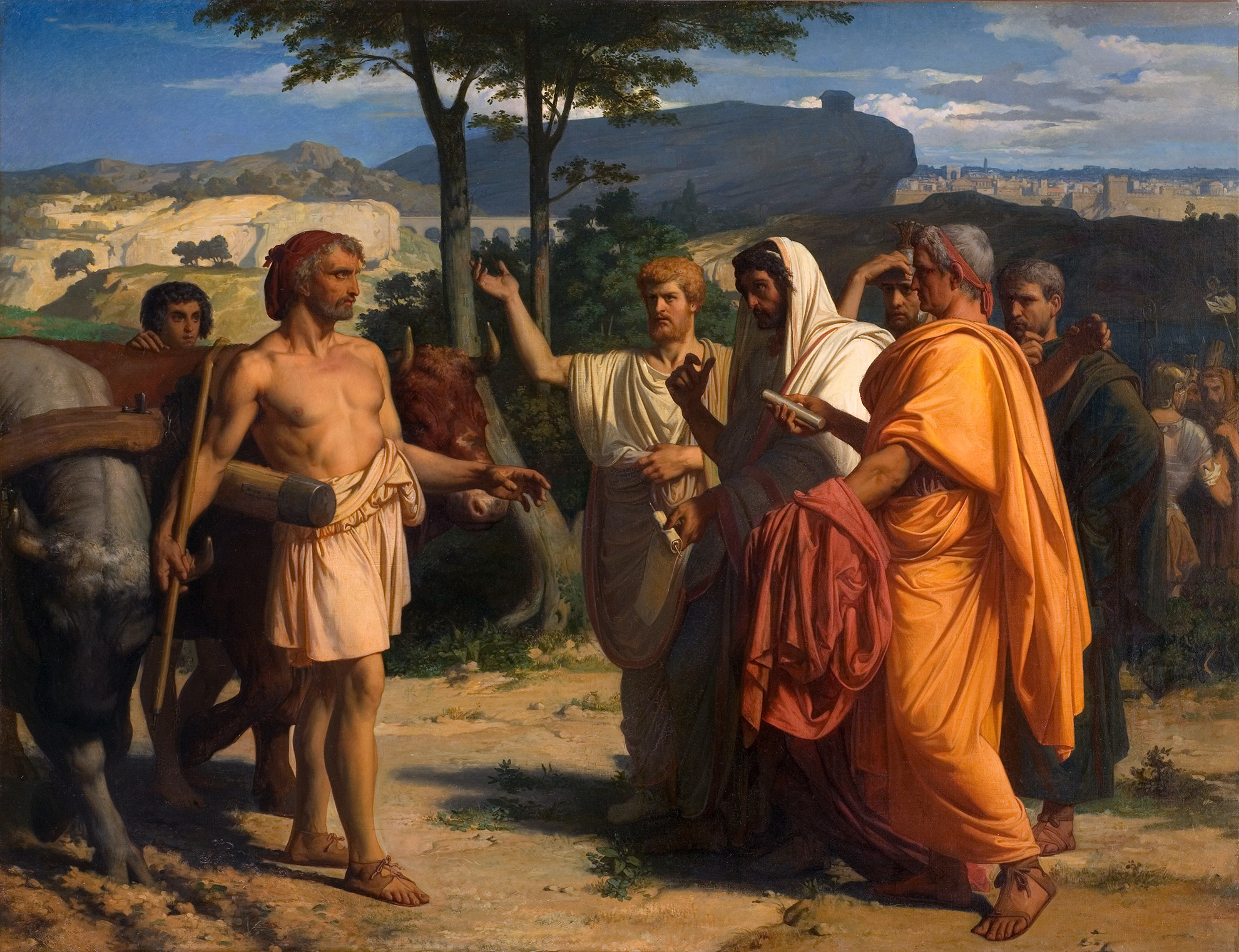


In 1844, Cabanel competed in the Prix de Rome for the second time. The Prix was the most prestigious art competition of his day, sponsored by the Académie des Beaux-Arts of France. Only artists under thirty years old could apply, and the selection process just to enter was so strict that participants were limited to a few hundred of France’s most dedicated and skilled painters. Winners were sent to Rome for five years to study the renaissance masters, and the connections and visibility they gained established them as top-tier artists for life.
The previous year, Cabanel had competed but was eliminated in round two—a figure study to be completed in four, seven-hour sessions. But in the 1844 Prix, Cabanel made it all the way to the final round, a large-scale history painting depicting a story from the historian Livy, where the Roman senate sent an envoy to appoint Lucius Quinctius Cincinnatus as dictator during a time of crisis, finding the humble patrician working in his fields. During the final round of the Prix, the finalists worked in isolation for seventy-two days completing their version of the theme.
Cabanel’s final work is extraordinarily masterful for a twenty-one year old artist, showing the depth of his skill and training in the studio of a previous Prix winner, Francois-Edouard Picot. Cincinnatus stands bare-chested and dignified, an earthy contrast to the overdressed envoy from Rome, whose rich orange and red robes stand oddly in the pastoral setting. It’s a testament to the difficulty of the competition that this refined work only earned Cabanel sixth place. Next year Cabanel, next year.
